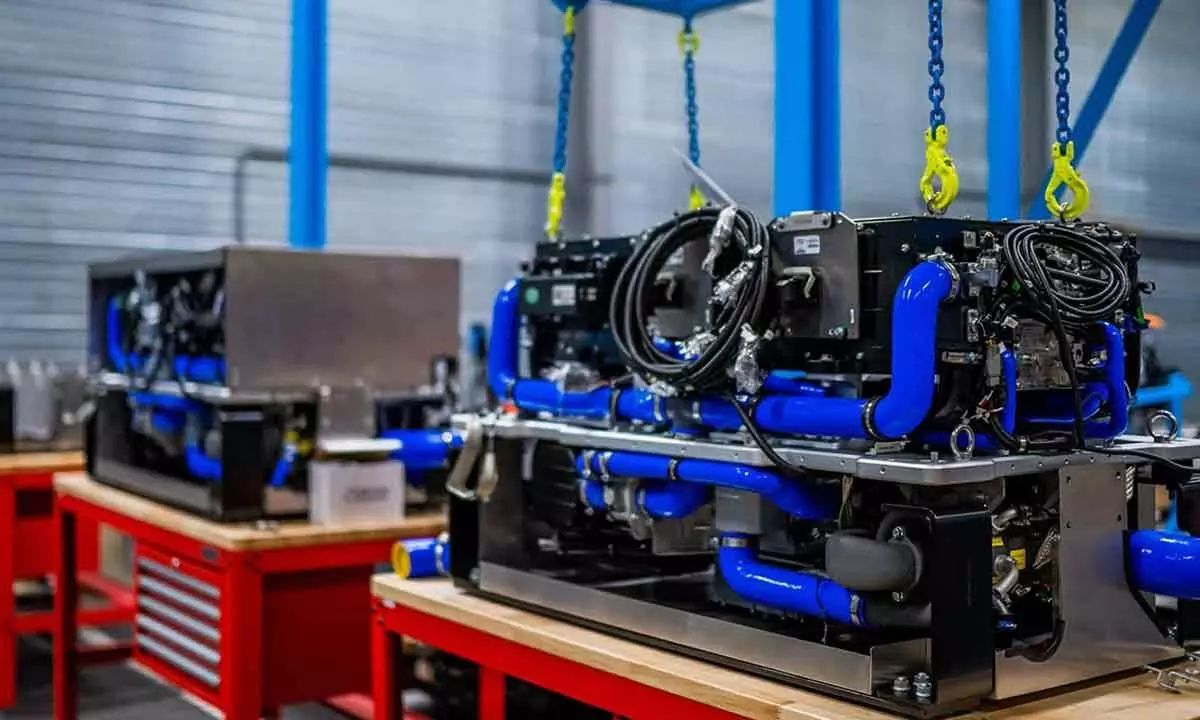Proton Exchange Membrane Fuel Cells: Model Identification and Innovative Optimization-based Control Strategies for a Sustainable Future

The faculty at NIT Warangal has been awarded a project grant (000993) from the Department of Science and Technology (DST) - Science and Engineering Research Board (SERB) for their innovative work on “Identification and Control Strategies to Improve the Performance of Proton Exchange Membrane (PEM) Fuel Cell Systems.
The faculty at NIT Warangal has been awarded a project grant (000993) from the Department of Science and Technology (DST) - Science and Engineering Research Board (SERB) for their innovative work on “Identification and Control Strategies to Improve the Performance of Proton Exchange Membrane (PEM) Fuel Cell Systems.” As the global community urgently seeks sustainable solutions to address environmental challenges, PEM fuel cells are emerging as a transformative technology in the energy landscape. By generating electricity through the electrochemical reaction of hydrogen and oxygen, PEM fuel cells produce only water as a by-product, offering a zero-emission energy source. This makes them particularly suitable for industries such as transportation and energy storage, where reducing greenhouse gas emissions is critical, and the impact on the environment is significant.
In the context of PEM fuel cells, maintaining and controlling the Oxygen Excess Ratio (OER) and stack voltage is vital for optimal performance. If these parameters are not effectively controlled, it can lead to inefficiencies, reduced lifespan, and even system failure. The intricacies of PEM fuel cells necessitate implementing advanced control strategies and precise modeling to ensure their efficiency and reliability. Accurate model identification is essential for effectively managing key performance variables such as stack voltage and OER. Advancements in controller design aim to address these shortcomings, improving the overall efficiency and reliability of PEMFC systems. These innovations position PEM fuel cells as a viable alternative to fossil fuels, contributing to the broader global effort to combat climate change.
Advanced control strategies like Model Predictive Control (MPC), Fuzzy Logic Control (FLC), and Fractional-Order Controllers ensure system stability and performance optimization. Meanwhile, optimization techniques such as Genetic Algorithms (GA) and Particle Swarm Optimization (PSO) reduce hydrogen consumption and enhance the overall reliability of the fuel cells. One such innovation is the use of Maximum Sensitivity Based Constrained Genetic Algorithm (GA) Optimization for tuning controllers. This method ensures that controllers are finely tuned to maintain stability while maximizing efficiency. The maximum sensitivity approach focuses on limiting the peak sensitivity of the control system to ensure that it is not overly reactive to disturbances, which can lead to instability or excessive wear on system components. This optimization technique improves the response time of controllers, reduces energy losses, and ensures that the system operates under optimal conditions without overloading any part of the fuel cell.
The integration of PEM fuel cells into electric vehicles (EVs) and the energy sector offers numerous benefits. For EVs, PEM fuel cells provide extended driving ranges, making them ideal for heavy-duty transport. Additionally, they offer the advantage of fast refuelling, making them well-suited for commercial fleets that need to minimize downtime. In the energy sector, PEM fuel cells improve grid stability by storing surplus renewable energy as hydrogen, which can be converted back into electricity when required. Importantly, PEM fuel cells generate emission-free power, reducing urban pollution and supporting efforts to create cleaner cities. By decreasing reliance on fossil fuels, PEM fuel cells play a pivotal role in the transition to sustainable energy in both the transportation and energy industries.
Under the guidance of Dr. G. Uday Bhaskar Babu, research scholar Mullapudi Siva in Chemical Engineering Department has conducted an in-depth analysis of PEM fuel cell dynamics and proposed effective control strategies aimed at enhancing their performance. This pioneering research has led to publications in prestigious journals, including the International Journal of Hydrogen Energy and Chemical Product and Process Modeling. Integrating the proposed PEM fuel cells into electric vehicles (EVs) and the broader energy sector presents numerous advantages, including increased efficiency, reduced environmental impact, and a significant step toward sustainable energy solutions. These potential benefits should give us hope and optimism for a cleaner and more sustainable future. Through these innovations, NIT Warangal is contributing to the future of clean energy technology and addressing the pressing challenges of environmental pollution
















